Complex Air Pollution and Public Health
Air Date: Week of April 11, 2025
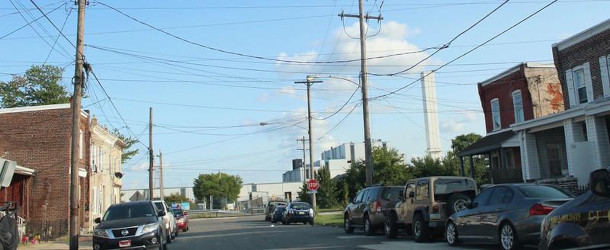
A Chester, Pennsylvania neighborhood sits adjacent to the ReWorld Delaware Valley facility, formerly known as the Covanta facility, during the time of the study. The Delaware Valley Resource Recovery facility (DVRRF) is a permitted waste-to-energy facility. The study showed that fence line communities are at a higher risk from air pollution than previously understood. (Photo: Peter DeCarlo)
Thousands of people across the United States live near multiple industrial facilities and petrochemical plants that expose them to higher levels of air pollution, but chemical exposure risk is commonly regulated one chemical at a time. A recent study conducted by a group of Johns Hopkins researchers found that “fence line” residents are at higher risk for multiple health problems because of the toxic mix of air they breathe. Lead author Dr. Keeve Nachman joined Host Paloma Beltran to walk through the study.
Transcript
O’NEILL: It’s Living on Earth, I’m Aynsley O’Neill.
BELTRAN: And I’m Paloma Beltran.
Scores of Americans live near petrochemical plants and other industrial facilities that constantly release chemicals into the environment. Historically, the risk of chemical exposure to those residents has been examined one chemical at a time. But according to a group of Johns Hopkins University researchers, that approach fails to accurately ascertain the overall air pollution and health risks to people who live near those industrial sites. So, using what’s called a mobile laboratory, or a lab on wheels, that team of researchers drove around petrochemical facilities in Chester County Pennsylvania for about a month measuring chemicals in the air at all hours of the day and night. Their recently published study found that fence line residents are at higher risk for harmful air pollution because of the toxic mix of air they breathe. And the research was recently submitted into the record as part of a Pennsylvania bill that requires the state permitting process to look at cumulative impacts. Dr. Keeve Nachman is the Robert S. Lawrence Professor of Environmental Health and Engineering at Johns Hopkins University. He led the study and joins us now to explain more. Dr. Nachman, Welcome to Living on Earth!
NACHMAN: Thanks so much for having me, Paloma.
BELTRAN: So, your team is using a new approach to measure air pollutant risk across fence line communities. What method did you use? How did that look like?
NACHMAN: So, we have two exciting methods that I think make the work that we're doing so important. The first is that we are using cutting edge mobile measurement technology. So, we essentially have a chemistry lab in a van or a small truck, and we're able to drive that truck around communities where we're trying to understand the impact of air pollution and measure toxic chemicals in real time and over space. And it allows us to develop these highly confident estimates of air pollutant concentrations that we then translate into some estimate of how likely people are to get sick if they were to breathe air like this over their lifetimes. So that's the first interesting piece, is that we have really great air measurement data, and then the other piece of what we've done that's so neat is we've taken this new approach to trying to translate information about what people breathe into some sort of characterization of how likely they are to get sick, if what we measured reflects what they breathe over a lifetime.
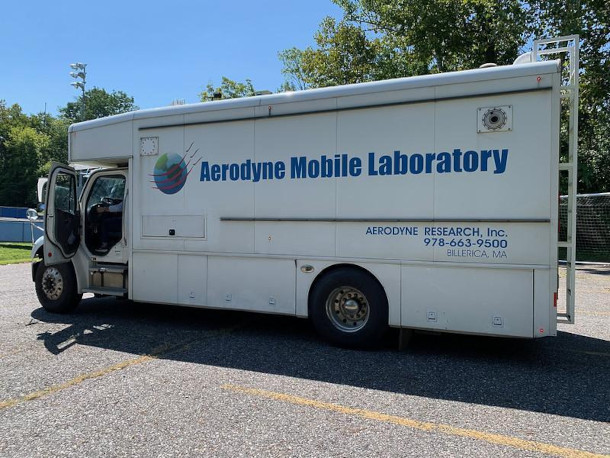
The Aerodyne Mobile Laboratory that the Johns Hopkins University team used to conduct research in Chester and other southeastern Pennsylvania towns. (Photo: Peter DeCarlo)
BELTRAN: How does your research compare to the traditional approach of measuring chemicals?
NACHMAN: So, our research changes the way we interpret information about concentrations of chemicals that people are exposed to. We developed a novel approach to characterizing the impact of chemicals that is more holistic than the traditional regulatory approach to interpreting information about people's exposures when they breathe polluted air. And what's really important about our approach is that our approach recognizes that each of the chemicals in the mixture can target multiple parts of the body, and it doesn't ignore the less sensitive parts of the body that each chemical affects. And so, when we take all that information together, we may find evidence of risks that the traditional methods may miss. And so, in particular, when you use the traditional regulatory risk assessment approach with the air pollution data that we developed in Pennsylvania, you actually don't find that any of the organ systems in the body would be at an elevated risk. And so, as a result of that, you may conclude that the air pollution exposures that people in that community incur are not a problem, and if you believe that they aren't a problem, there's very little motivation to do anything to change people's situations, right?
So, our method, because it does more than just account for one effect per chemical. It accounts for the fact that each chemical could elicit multiple effects in the body, we come to different conclusions. So, we actually find for five different parts of the body an elevated risk that people breathing that air may experience five different non cancer health outcomes, including respiratory effects and two others, and those effects would be entirely missed using the traditional regulatory approach. And the reason why that's so important is that the interpretation of our results would likely lead to very different approaches to managing risks in the community, we find that, given current conditions, it's reasonable to expect that people would get sick with one of those five diseases or ailments or affected organ systems. And as a result, if posed the question of whether it would be okay to permit an additional industrial facility in the region, I would think we would likely determine, no the community is already overburdened, given what we're able to estimate now and again, that's different from what you might conclude given a traditional risk assessment, where we might say “there's no reason to think that the conditions that people are currently experiencing are problematic. So go ahead.”

The team tested the air around industrial plants such as the Evonik facility in Chester, with the Pennsylvania Department of Environmental Protection measurement site in the lower right of the photo. According to the EPA's Toxic Release Inventory, the Evonik facility's production includes ammonia, sulphuric acid, sodium hydroxide and sodium sulphate. (Photo: Peter DeCarlo)
BELTRAN: How can this approach be applied to other fence line communities across the United States?
NACHMAN: The method we developed for this study has implications far beyond the community in southern Delaware County and Pennsylvania. I'm thrilled that we were able to use it to help characterize the risks that they may be facing. That's really, really important and a big part of our collaboration with them, but this approach can be applied anywhere. So certainly, it has value in other communities living on the fence line. Cancer Alley in Louisiana is certainly a place where there's heavy petrochemical and other industrial processing that may be impacting the lives and the health of people who live in those communities, and I think it would be readily deployable there our method, but I think this method really even beyond fence line communities and even beyond air pollution, has relevance. There is nowhere in our country or anywhere in the world where people are exposed to a single chemical at a time, and our long-standing approach of trying to regulate them on a one-by-one basis is missing the boat and under protecting people.
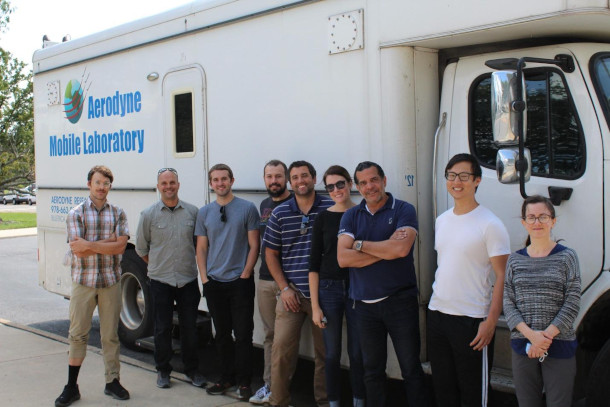
Scientists from Aerodyne Research and Johns Hopkins University drove the mobile laboratory all hours of the day and night to measure the pollution experienced by residents who live near industrial facilities in Delaware County, Pennsylvania. From left to right: Ellis Robinson (JHU), Peter DeCarlo (JHU), Conner Daube (AR), Ben Werden(AR), Joseph R. Rosciolli (AR), Kenji Lizardo (AR), Megan Claflin (AR), Roger Sheu and Mina Tehrani (JHU). (Photo: Peter DeCarlo)
And so we are excited to use this method elsewhere, to use nuance and a fuller understanding of the negative action of each chemicals to characterize the risks that people face, and in the immediate future, we're looking at taking this method and using it, not only for air, but looking at a community where we can get data on air, on drinking water, on soil exposures, on consumer products, on food, and taking those exposures together and saying something about what that collective experience means for health. And really, that's the truest essence, or that's a major step towards this idea of cumulative risk assessment. Looking at mixtures is just one piece of it. You know, mixtures are very important, but we also recognize that chemicals are not the only stressor people experience in their lives, and we often know that fence line communities are experiencing other forms of disadvantage that may make them more vulnerable to chemical exposures. So, if we aren't accounting for all of those other stressors, and we're making decisions in the absence of that consideration, we aren't protecting people the way we should and the way they deserve.
BELTRAN: You know, Keeve, your study was published at a time when the Trump administration is cutting and limiting environmental justice programs across the country. What impact could this research have on policy making, especially regarding rules to protect our most vulnerable populations? What are you hoping to see here?
NACHMAN: I have to acknowledge that this is a time when many of us are feeling discouraged about work like this being used in the immediate future to intervene on injustices faced by fence line communities around the country. That said, this work and the approaches here and a lot of the work that many of my colleagues are doing in the field, hold a lot of promise and represent important advances towards true characterization of the combined or cumulative burdens that communities are facing. And I think now is a time to develop these methods and to really hunker down and generate the evidence we need to use as a basis for smarter policy making when windows open up in the future where there is receptivity to making better decisions. I'm confident that those windows will reopen, even if, in the short term, we feel like they're closed. So, I haven't lost hope, and we're moving ahead with our research and with deploying these methods, because we know the time will come where there will be receptivity to using them, and change will happen, and we will do a better job of protecting the health of the public.
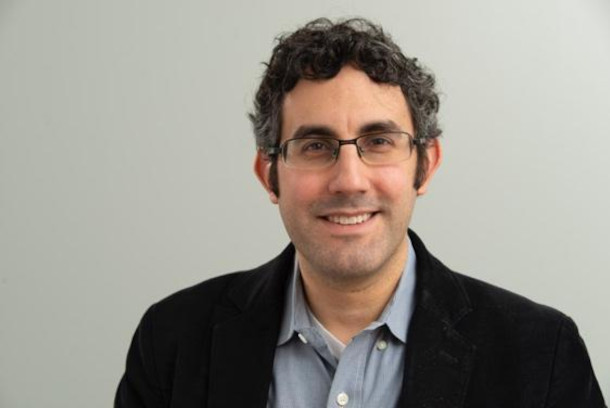
Keeve Nachman, Robert S. Lawrence Professor of Environmental Health and Engineering at Johns Hopkins University, analyzed the data from the testing conducted by his colleague Peter DeCarlo and the team of Johns Hopkins University and Aerodyne Research scientists. (Photo: Courtesy of Keeve Nachman)
BELTRAN: What lessons do you hope residents of other fence line communities learn from this study?
NACHMAN: The only thing I really hope that residents of fence line communities take away from this is that we're working hard to develop the data that we can use to protect them. I want to be really clear, and I'm asked this by reporters a lot, what can residents do differently? I don't think the burden should be on residents to do anything differently. I think residents are the ones who are bearing the brunt of the decisions of other actors like the industry and federal, state and local governments. They're the ones that should be doing things differently to protect residents. Residents should feel free to live their lives as they want. And so, I bristle a little bit at the notion that there's anything anyone can do other than know that we are not losing sight of the prize of public health protections for all U.S. citizens and beyond.
BELTRAN: Keeve Nachman is the Robert S Lawrence Professor of Environmental Health and engineering and Associate Director of the Center for a Livable Future at Johns Hopkins University, thank you for joining us.
NACHMAN: Thanks so much for having me.
Links
Read this study in Environmental Health Perspectives
Washington Post | “Breathing Dirty Air Is Worse for Your Health Than We Thought”
Living on Earth wants to hear from you!
Living on Earth
62 Calef Highway, Suite 212
Lee, NH 03861
Telephone: 617-287-4121
E-mail: comments@loe.org
Newsletter [Click here]
Donate to Living on Earth!
Living on Earth is an independent media program and relies entirely on contributions from listeners and institutions supporting public service. Please donate now to preserve an independent environmental voice.
NewsletterLiving on Earth offers a weekly delivery of the show's rundown to your mailbox. Sign up for our newsletter today!
 Sailors For The Sea: Be the change you want to sea.
Sailors For The Sea: Be the change you want to sea.
 The Grantham Foundation for the Protection of the Environment: Committed to protecting and improving the health of the global environment.
The Grantham Foundation for the Protection of the Environment: Committed to protecting and improving the health of the global environment.
 Contribute to Living on Earth and receive, as our gift to you, an archival print of one of Mark Seth Lender's extraordinary wildlife photographs. Follow the link to see Mark's current collection of photographs.
Contribute to Living on Earth and receive, as our gift to you, an archival print of one of Mark Seth Lender's extraordinary wildlife photographs. Follow the link to see Mark's current collection of photographs.
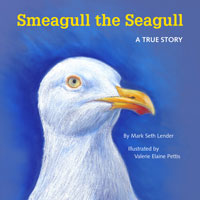 Buy a signed copy of Mark Seth Lender's book Smeagull the Seagull & support Living on Earth
Buy a signed copy of Mark Seth Lender's book Smeagull the Seagull & support Living on Earth

